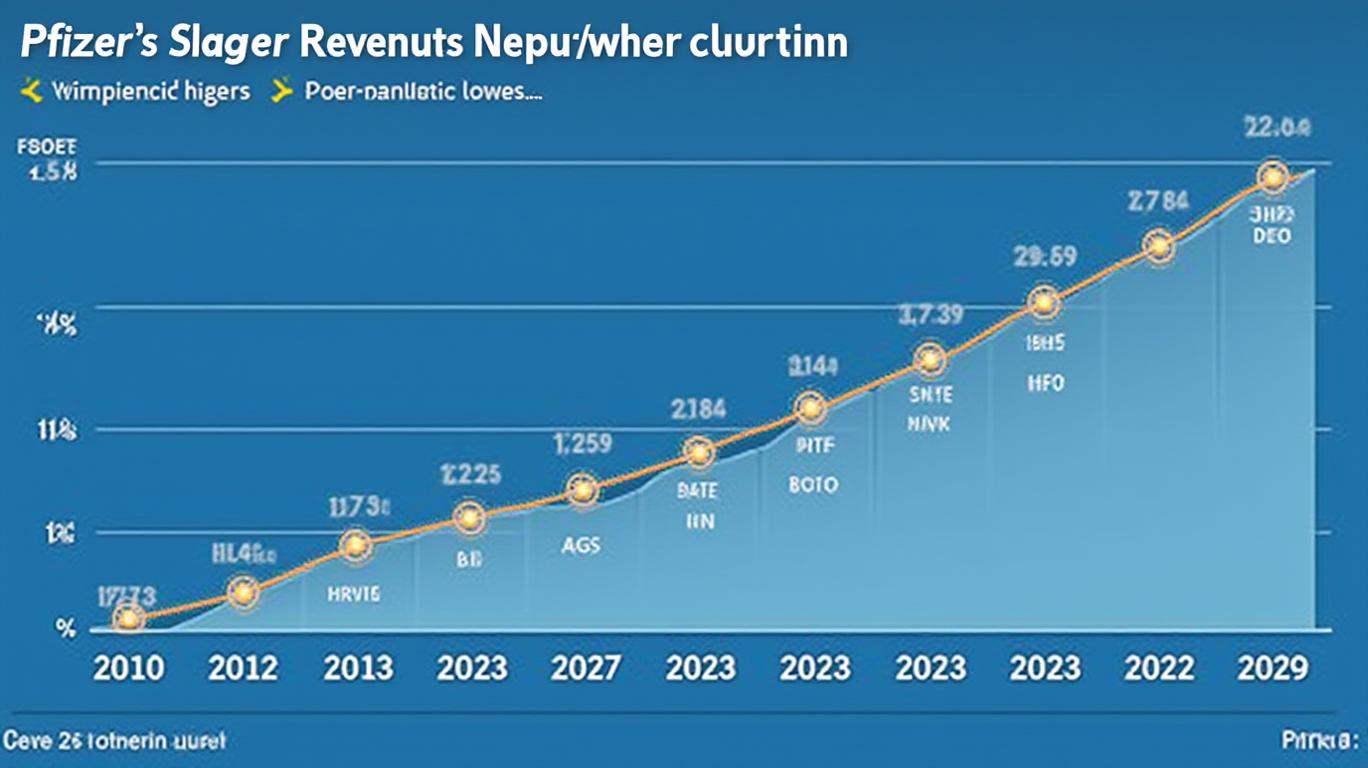Pfizer's Q1 Earnings Preview: Navigating Headwinds in a Post-Pandemic World
Wall Street is bracing for Pfizer’s (PFE) Q1 2025 earnings report, which is expected to show a significant year-over-year decline in both earnings and revenue. Analysts project a diluted EPS of $0.67, down 18.3% from $0.82 in Q1 2024, and revenue of $13.88 billion, a 6.7% drop from $14.88 billion. These declines reflect a challenging environment for the pharmaceutical giant as it transitions away from pandemic-era revenue streams and navigates new headwinds. Here’s what investors need to know.
The Decline in Context
Pfizer’s struggles this quarter are no surprise. The company has long warned that its 2025 results would suffer from reduced sales of its pandemic-era products, including the Comirnaty vaccine and Paxlovid treatment. While these products contributed over $10 billion to Q1 2024 revenue, their impact has waned as the world moves past acute pandemic phases. Additionally, the Inflation Reduction Act (IRA) Part D Redesign is expected to shave approximately $1 billion off Pfizer’s annual revenue, further pressuring margins.

Key Drivers of the Downturn
- Post-Pandemic Revenue Shift: Analysts estimate that pandemic-related products will contribute only about $1.2 billion in non-recurring Paxlovid revenue this year, a stark contrast to the $13 billion peak in 2022.
- Generic Competition: Patents for drugs like Edluar and Xyzal have expired, exposing to cheaper generic alternatives.
- Operational Challenges: The company’s Manufacturing Optimization Program, aimed at reducing costs, has faced delays, potentially squeezing near-term profitability.
Can Pfizer Still Beat Estimates?
Historically, Pfizer has defied expectations. Over the past four quarters, the company exceeded EPS estimates every time, including a +31.25% surprise in the last reported quarter when it delivered $0.63 against a $0.48 consensus. However, the current Zacks Earnings ESP of -7.23%—a measure of recent analyst revisions—hints at a higher risk of an earnings miss. This tension between Pfizer’s strong track record and bearish revisions creates uncertainty.
Why Investors Should Stay Tuned
While Q1’s decline is anticipated, the earnings call on April 29 will be critical. Management’s commentary on two key areas will determine the stock’s direction:
1. Cost Savings Execution: Pfizer aims to save $2.5 billion annually by 2026 through its cost realignment program. Progress here could offset revenue headwinds.
2. Growth Drivers: New drugs like Vyndaqel (for rare heart disease) and Cibinqo (eczema) are expected to contribute meaningfully. Analysts project Vyndaqel alone could hit $1 billion in sales by 2026, a key pillar of future growth.
The Big Picture: 2025 and Beyond
Pfizer’s full-year 2025 guidance remains intact, with an Adjusted EPS range of $2.80–$3.00, reflecting 10–18% operational growth compared to 2024. This suggests that Q1’s decline is a transitionary stumble, not a sign of structural weakness. If management reaffirms this outlook and provides clarity on cost savings, the stock could rebound.
Risks to Watch
- Medicare Part D Uncertainty: The IRA’s impact on drug pricing could be more severe than anticipated.
- Foreign Exchange Fluctuations: A stronger dollar could further depress international revenue.
- Generic Erosion: If generic competition accelerates, particularly for legacy drugs, margins could suffer.
Conclusion: A Bumpy Ride, but Still a Buy?
Pfizer’s Q1 results will likely confirm the expected declines, but the long-term story remains intact. With a Zacks Rank #2 (Buy) and a robust pipeline of non-pandemic products, the company is positioned to stabilize and grow. Investors should focus on management’s ability to execute cost-cutting and accelerate growth from newer drugs.
The stock’s historical post-earnings volatility—a 50-50 split between positive and negative returns—means a +2.7% pop or -1.3% dip could follow the report. However, with a $3.00 EPS high end for 2025, Pfizer’s valuation looks compelling at current levels. The path to recovery is clear, but navigating the headwinds will test both the company and its shareholders.
In the end, Pfizer’s Q1 is a speed bump, not a roadblock—if management can deliver on its promises, the stock could rebound strongly by year-end.

Comments
No comments yet